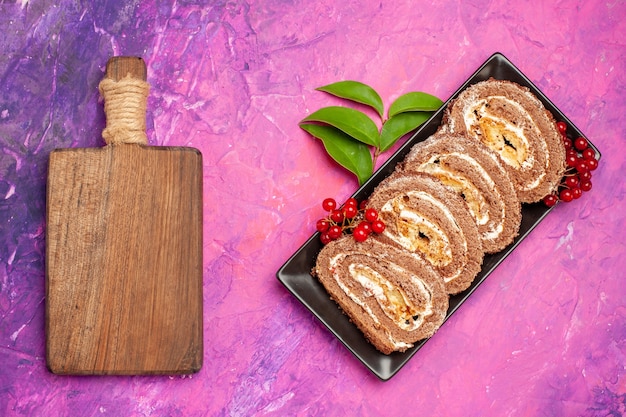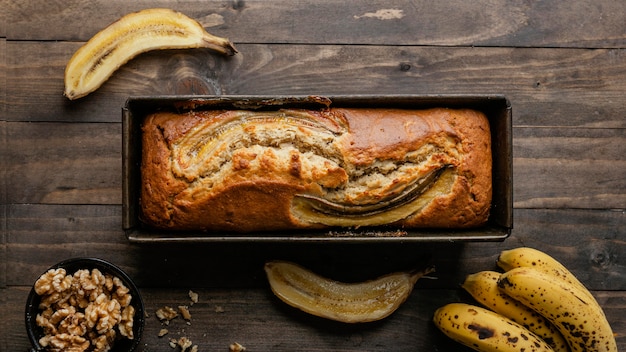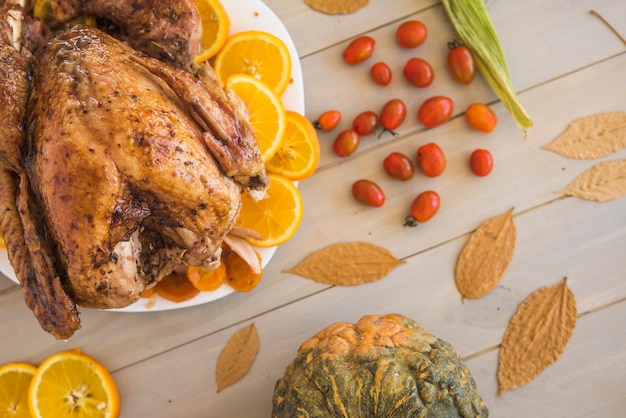Ah, the humble turkey breast. A versatile protein that can be the star of a holiday feast, a casual weeknight dinner, or even a picnic in the park. I've roasted countless turkey breasts over the years, from small, single-serving sizes to those impressive 7lb beauties that feed a crowd. And trust me, there's a certain satisfaction in pulling a perfectly golden-brown, juicy turkey breast out of the oven. It's a culinary victory worth celebrating!
Today, we're diving deep into the world of roasting a 7lb turkey breast. We'll cover everything from choosing the right bird to achieving that crispy skin and succulent meat. So, grab a comfy chair, a warm beverage, and let's embark on this culinary adventure together.
(Part 1) Choosing Your perfect turkey Breast

Before we even think about preheating the oven, we need to choose our main attraction – the turkey breast. The good news is, there are lots of options, each with its own unique charm. The trick is to pick the one that best suits your needs, your taste, and your cooking style.
Bone-in or Boneless?
This is a personal preference, really. bone-in turkey breasts tend to be more flavorful and stay juicier during cooking, thanks to the bone helping to retain moisture. Plus, they look more impressive, with that classic roasted bird look. But if you're looking for ease of carving and a slightly faster cook time, a boneless breast might be the way to go. It's really up to you!
Fresh or Frozen?
Fresh turkey breast is the ideal choice if you have the time to plan your roast. It often boasts a better texture and a more pronounced flavor. But, let's be real, we don't always have that luxury. That's where frozen turkey breasts come in handy. They're readily available, usually cost-effective, and can be defrosted overnight in the fridge. Just remember to give it plenty of time to thaw properly - no one wants to deal with a half-frozen bird!
Flavour Profile: It's About More Than Just Turkey!
Now, let's talk taste! While a classic, plain turkey breast is always a safe bet, the world of flavor is your oyster. You can find turkey breasts pre-seasoned with a variety of herbs and spices, like rosemary, sage, thyme, garlic, paprika, and even smoked flavors. Don't be afraid to experiment and choose something that tantalizes your taste buds. Just remember, if you're choosing a pre-seasoned turkey, adjust your seasonings accordingly to avoid an over-salted bird.
(Part 2) Prepping for Perfection: Preparing Your Turkey Breast

Now that you've got your perfect turkey breast, it's time for a little prep work. This crucial step can make all the difference in the final result, ensuring a beautifully browned, juicy, and flavorful bird.
Patting Dry: It's About More Than Just Cleanliness
First things first, pat your turkey breast dry with paper towels. This simple step is essential for two reasons. First, it helps the skin to crisp up beautifully as it roasts, creating that irresistible golden-brown crust. Second, it prevents the bird from steaming in the oven, which can make the meat soggy and lackluster.
Seasoning: Unleashing the Flavor Potential
Now comes the fun part: seasoning! You can go for a simple salt and pepper combo, or get creative with a blend of herbs and spices. I'm partial to a mix of garlic powder, onion powder, paprika, thyme, and a pinch of cayenne pepper. It gives the turkey a nice depth of flavour and a subtle kick. But honestly, the possibilities are endless! Just choose something that excites your taste buds and complements your chosen side dishes. Remember to rub the seasoning all over the breast, getting it into those nooks and crannies for maximum flavor penetration.
Butter Up: A Rich and Delicious Touch
If you want to take your turkey breast to the next level, consider a little butter-based TLC. Rubbing a thin layer of softened butter all over the skin adds a lovely richness and enhances the browning process, resulting in a beautifully browned, intensely flavorful bird. A little bit of butter goes a long way, so don't overdo it, or you'll end up with a greasy turkey.
(Part 3) Roasting: Unveiling the Secrets of Oven-Roasted Perfection

Your turkey breast is ready, the kitchen is prepped, now it's time to get roasting. This is where we delve into the nitty-gritty details, the temperature, the time, and those essential tips for achieving that perfect roast.
Oven Temperature: Finding the Sweet Spot
Most recipes recommend roasting a turkey breast at 325°F (160°C). This temperature allows for even cooking, ensuring that the entire breast cooks through evenly, while also encouraging that beautiful golden-brown browning on the skin.
roasting time: Estimating the Perfect Cook Time
Now, for the big question: how long do you roast a 7lb turkey breast? The answer, as with most things in cooking, is "it depends." The exact time will vary based on the thickness of the breast and whether it's bone-in or boneless. A good rule of thumb is to roast a 7lb turkey breast for about 2-2.5 hours for bone-in and 1.5-2 hours for boneless.
But remember, a meat thermometer is your best friend in this culinary adventure. It's the only way to guarantee that the bird is cooked through and safe to eat.
Meat Thermometer: Your Culinary Compass
A meat thermometer is non-negotiable. It's your most reliable tool for ensuring a perfectly cooked turkey breast. Insert the thermometer into the thickest part of the breast, making sure to avoid the bone. The internal temperature should reach 165°F (74°C) for safe consumption.
Resting Time: Let the Juices Redistribute
Once the turkey breast has reached the desired internal temperature, don't be tempted to carve it immediately. Allow it to rest for 10-15 minutes before carving. This crucial step allows the juices to redistribute throughout the meat, resulting in a more tender and succulent bird.
(Part 4) Cooking Time Guide for Your 7lb Turkey Breast
Here's a handy table to help you estimate the cooking time for your 7lb turkey breast. Remember, this is just a guideline. Always check the internal temperature with a meat thermometer to ensure it's cooked through.
| Type of Breast | Estimated Cooking Time |
|---|---|
| Bone-in | 2-2.5 hours |
| Boneless | 1.5-2 hours |
(Part 5) roasting tips and Tricks: Mastering the Art of Turkey Breast
Over the years, I've picked up a few tricks that elevate my turkey breast game. These tips are your secret weapons for achieving that perfectly roasted turkey.
Basting: Keeping Things Moist and Flavorful
Basting your turkey breast with pan juices or butter during cooking helps to keep it moist and adds a lovely golden-brown color. You can do this every 30-45 minutes, simply spooning the pan juices over the bird.
Tenting It Up: Preventing Drying Out
To prevent your turkey breast from drying out, consider tenting it with foil during the last 30 minutes of cooking. This creates a steamy environment, helping to lock in moisture and prevent the breast from overcooking.
Don't Overcook: The Key to Tender Meat
Overcooked turkey can be dry and tough. Check the internal temperature regularly to avoid overcooking. It's always better to have a slightly undercooked turkey that you can cook for a few more minutes than a dry one.
(Part 6) Carving: A Symphony of Slicing
Your turkey breast has rested, the aroma is intoxicating, now it's time for the grand finale: carving. Done right, carving is a graceful, elegant dance that transforms a whole turkey breast into individual slices, ready for feasting.
Sharp Knife: Your Key to Success
Use a sharp knife to carve the turkey breast. A dull knife makes the process difficult and could lead to tearing the meat. A sharp knife glides effortlessly through the meat, creating clean, even slices.
Bone-in vs. Boneless: Tailoring Your Technique
Carving a bone-in turkey breast differs slightly from a boneless one. With a bone-in breast, start by carefully cutting along the bone to remove it. Once removed, slice the meat across the grain into thin, even slices. With a boneless breast, simply slice the meat across the grain, working your way from one end to the other.
Serve It Up: The Grand Finale
Now that your turkey breast is carved, it's time to serve it up. It can be served on its own, or with a variety of side dishes, like roasted vegetables, mashed potatoes, and gravy. Don't forget to offer a variety of condiments like cranberry sauce, stuffing, and your favorite chutneys. Enjoy!
(Part 7) Leftover Turkey Breast: A Culinary Treasure Trove
Let's face it, chances are you'll have some leftover turkey breast. But don't despair! Leftovers are a culinary treasure, offering endless possibilities for delicious meals.
turkey sandwiches: A Classic comfort food
Classic turkey sandwiches are a quick and easy way to use up leftover turkey. Simply slice the turkey, add some cheese, lettuce, tomato, and your favorite dressing. You can get creative with your toppings, adding avocado, bacon, or even a dollop of cranberry sauce for a sweet and savory twist.
turkey soup: Warming the Soul
Turkey soup is a warm and comforting dish that's perfect for a chilly day. You can add leftover turkey to your favourite soup recipe or use it to make a simple turkey noodle soup. Just throw in some broth, noodles, carrots, celery, and onions, and you've got a hearty, satisfying meal.
turkey salad: A Versatile Delight
Turkey salad is another great option for leftover turkey. Simply combine the turkey with mayonnaise, celery, onion, and your favourite seasonings. Get creative with your seasonings, adding herbs like parsley, dill, or chives, or a touch of lemon zest for a bright and tangy flavour. You can serve it on sandwiches, wraps, or crackers.
Turkey Shepherd's Pie: A Hearty and Satisfying Meal
Turkey Shepherd's Pie is a delicious and satisfying way to use up leftover turkey. Simply layer the turkey with mashed potatoes and bake until golden brown. You can add a layer of gravy for extra richness or top it with a sprinkle of cheese for a melty goodness.
(Part 8) FAQs: Your Turkey-Roasting Q&A Session
Here are some frequently asked questions about roasting turkey breast, along with detailed answers.
1. How do I know if my turkey breast is cooked through?
The best way to check if your turkey breast is cooked through is to use a meat thermometer. The internal temperature should reach 165°F (74°C) in the thickest part of the breast, avoiding the bone. If you don't have a meat thermometer, you can check for doneness by cutting into the thickest part of the breast. The juices should run clear, not pink.
2. What if my turkey breast is a little dry?
If your turkey breast is a little dry, you can try adding some gravy or pan juices to moisten it up. You can also try serving it with a side dish that has a lot of moisture, such as roasted vegetables or mashed potatoes.
3. Can I freeze leftover turkey breast?
Yes, you can freeze leftover turkey breast. Simply wrap it tightly in plastic wrap or foil and store it in the freezer for up to 3 months. To thaw, place the turkey breast in the refrigerator overnight.
4. How do I make sure my turkey breast skin is crispy?
To get crispy turkey skin, pat the breast dry with paper towels before roasting. You can also try rubbing the skin with a little bit of butter or oil. Be sure to roast the turkey at a high enough temperature to encourage browning and crisping.
5. What are some good side dishes to serve with roasted turkey breast?
There are so many delicious side dishes to serve with roasted turkey breast. Some classic options include roasted vegetables, mashed potatoes, stuffing, gravy, cranberry sauce, and green bean casserole. But don't be afraid to get creative! You can also serve it with wild rice pilaf, sweet potato casserole, or even a vibrant salad with seasonal fruits and vegetables.
There you have it, a comprehensive guide to oven roasting a 7lb turkey breast. Remember, the key to a perfect roast is to choose a high-quality turkey breast, prepare it properly, and cook it until it's cooked through but not overcooked. With a little practice and these tips, you'll be able to roast a delicious and impressive turkey breast that will impress your family and friends. Happy roasting!
Everyone is watching

Corn on the Cob: The Ultimate Guide to Perfectly Cooked Ears
Healthy MealsAh, corn on the cob. Just the name evokes images of sunny days, barbecues, and that sweet, juicy flavour that ...

Perfect Pork Roast Oven Cooking Time: A Guide to Delicious Results
Healthy MealsThere's something truly satisfying about a perfectly roasted pork. The aroma alone is enough to make your mout...

Ham Cooking Time: How Long to Bake, Smoke, or Boil a Delicious Ham
Healthy MealsAh, ham. It's a classic, isn't it? A real crowd-pleaser, especially around holidays. And when done right, it'...

Scallops: The Ultimate Guide to Perfect Cooking
Healthy MealsAh, scallops. Those delicate, sweet, and utterly delicious morsels of the sea. They hold a special place in my...

Spaghetti Squash: The Ultimate Guide to Cooking and Serving
Healthy MealsRemember that time you saw spaghetti squash at the supermarket, looking all bumpy and strange, and thought, "W...
